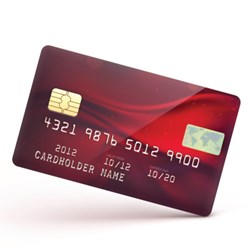How Can You Help Your IT Merchant Clients Through The Consumer EMV Learning Curve?

By Christine Kern, contributing writer

Randy Vanderhoof, director of the EMV Migration Forum, addressed concerns about the U.S. EMV transition during a presentation at Retail Solutions Providers Association (RSPA) RetailNOW 2015. Vanderhoof says this transition is particularly challenging because of its complexity: every part of the payment ecosystem has to change, including merchants, consumers, issuers, and acquirers.
For you and your merchant clients, one concern related to this changing ecosystem is the possibility that transactions could slow down — which could affect revenues. Vanderhoof explained that studies on transaction speeds show the difference between using chip cards versus magnetic stripe cards (with a trained user) “is very minimal, a matter of a second or two.” However, he cautioned, “in a practical light, you have a different scenario because you’ve got the cardholder who’s unfamiliar, who may insert their card and then walk away and think that their card’s going through and is transacting and it turns out that it’s waiting for them to enter a PIN or have to swipe the card and they have to go back and reinsert it again.” That education process will take time, and Vanderhoof said, “We anticipate, as an industry, that this is going to be disruptive for a while, and the lines are going to get longer. But it will get better over time, as people become more familiar with it.”
Ultimately, consumers are dealing with a number of variables, including contact vs. contactless payment? Debit vs. credit cards? When do I swipe, tap, or insert? Where did I leave my card? Do I need a PIN or signature? Do I press debit, credit, or other at the terminal? These questions will require patience and education as consumers (and merchants and other stakeholders) adjust to the new payment processes.
Another area of concern is changes to welfare assistance cards. The federal government is required to issue EMV cards for welfare assistance by the end of 2015. Those cards are all being converted to chip cards, and the merchant terminals that are set up to accept EMV credit/debit cards should be capable of accepting the EBT cards as well, as a chip card transaction.
Vanderhoof commented, overall, “We need to document progress, revisit problem areas, and communicate all potential options. There are new ways to look at things … and we shouldn’t always go back to what worked before … We need to be open to new ideas, challenging the conventional ways, and then sharing information. It’s very important that industry parties work together, have these conversations, and talk about what worked and what hasn’t worked, and then celebrate our successes.”
